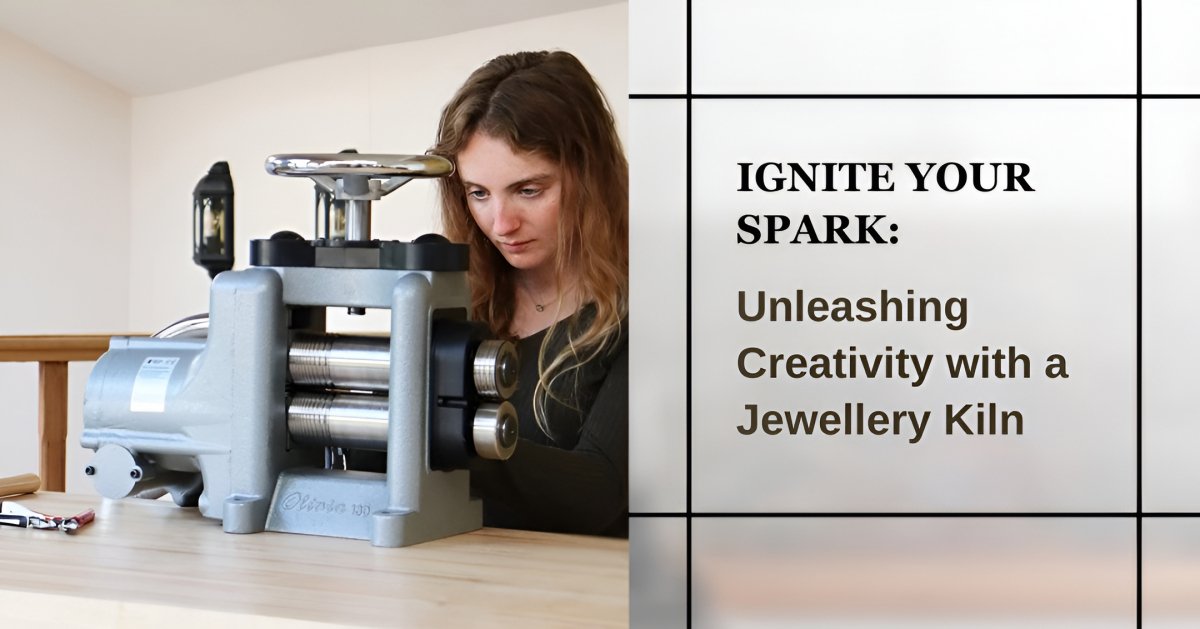
Ignite Your Spark: Unleashing Creativity with a Jewellery Kiln
Introduction
In the world of jewellery crafting, where precision meets creativity, one indispensable tool takes center stage—the jewellery kiln. This unassuming piece of equipment plays a pivotal role in transforming raw materials into exquisite pieces of wearable art.
Join us on a journey into the heart of craftsmanship as we explore the ins and outs of the jewellery kiln and its crucial role in the world of jewellery design.

The Art of Jewellery Crafting
Jewellery crafting is an ancient art form that has evolved over centuries. From the intricate designs of ancient civilisations to the modern masterpieces gracing the showcases of contemporary jewellers, the process has always involved a delicate dance between creativity and technical precision.
The jewellery kiln is a silent partner in this dance, providing the controlled environment needed to bring these designs to life.
Understanding the Jewellery Kiln
A jewellery kiln is a specialised furnace designed to withstand high temperatures, creating the ideal conditions for various jewellery-making processes. These processes include casting, enamelling, fusing, and annealing—each contributing to the overall artistry of the final piece.
1. Casting
In the casting process, molten metal is poured into a mould to create the desired shape. The jewellery kiln plays a crucial role in maintaining the precise temperature needed to transform solid metal into a liquid state, allowing it to take the form of the mould.
2. Enamelling
Enamelling involves fusing powdered glass to metal to create vibrant, durable coatings. The jewellery kiln provides a carefully controlled environment where the piece can be heated to just the right temperature, ensuring the enamel bonds securely with the metal surface.
3. Fusing
Fusing is the process of melding different metals together to create unique alloys or composite materials. The jewellery kiln facilitates this intricate process by providing the necessary heat and controlled conditions for the metals to merge seamlessly.
4. Annealing
Annealing is a critical step in the jewellery-making process, involving the controlled heating and gradual cooling of metals to relieve stress and improve their work-ability. The jewellery kiln ensures that this process is executed with precision, preventing damage to the delicate structures of the piece.
The Dance of Precision and Creativity
Crafting jewellery is not merely about manipulating metals and gemstones; it's a dance between precision and creativity. The jewellery kiln, with its ability to reach and maintain specific temperatures, offers the opportunity to experiment with different techniques and push the boundaries of traditional craftsmanship.
Essential Considerations for Choosing the Perfect Jewellery Kiln
When delving into the intricate world of jewellery crafting, one cannot overlook the significance of a tool that plays a pivotal role in the transformation of raw materials into wearable works of art—the jewellery kiln.
1. Temperature Control
Precise temperature control is the linchpin of successful jewellery crafting. A reliable jewellery kiln should offer the ability to reach and maintain specific temperatures, catering to various processes such as casting, enamelling, fusing, and annealing. The nuances of each technique require different temperature ranges, making this control an absolute necessity.
2. Material Compatibility
Jewellery-making involves an array of metals, gemstones, and enamels. When selecting a jewellery kiln, it's imperative to consider its compatibility with the materials you intend to work with. Different materials require specific temperature ranges and heating times to achieve optimal results, ensuring that the kiln is suitable for your chosen medium.
3. Size and Capacity
Jewellery kilns come in various sizes, and choosing the right one depends on the scale of your projects. Consider the size of the pieces you typically create and ensure that the kiln's dimensions and capacity align with your artistic aspirations. A kiln that is too small may limit your creative scope, while an excessively large one could be inefficient for smaller projects.
4. Ventilation and Safety Features
Safety should always be a top priority when working with a jewellery kiln. Adequate ventilation is essential to dissipate fumes and prevent the build-up of harmful gases. Additionally, consider kilns equipped with safety features such as temperature alarms and automatic shut-off systems, providing an extra layer of protection for both the artisan and the workspace.
5. Budget Considerations
Like any tool, jewellery kilns come with a range of price points. Establish a budget based on your needs and aspirations. While it's tempting to opt for the most advanced model, it's essential to strike a balance between features, performance, and affordability, ensuring that your investment aligns with your artistic goals.
Conclusion
As we conclude our exploration of the jewellery kiln, it becomes evident that this unassuming tool is the unsung hero in the realm of jewellery crafting. Its role in the delicate dance of precision and creativity is unparalleled, allowing artisans to transform raw materials into timeless pieces of wearable art.

